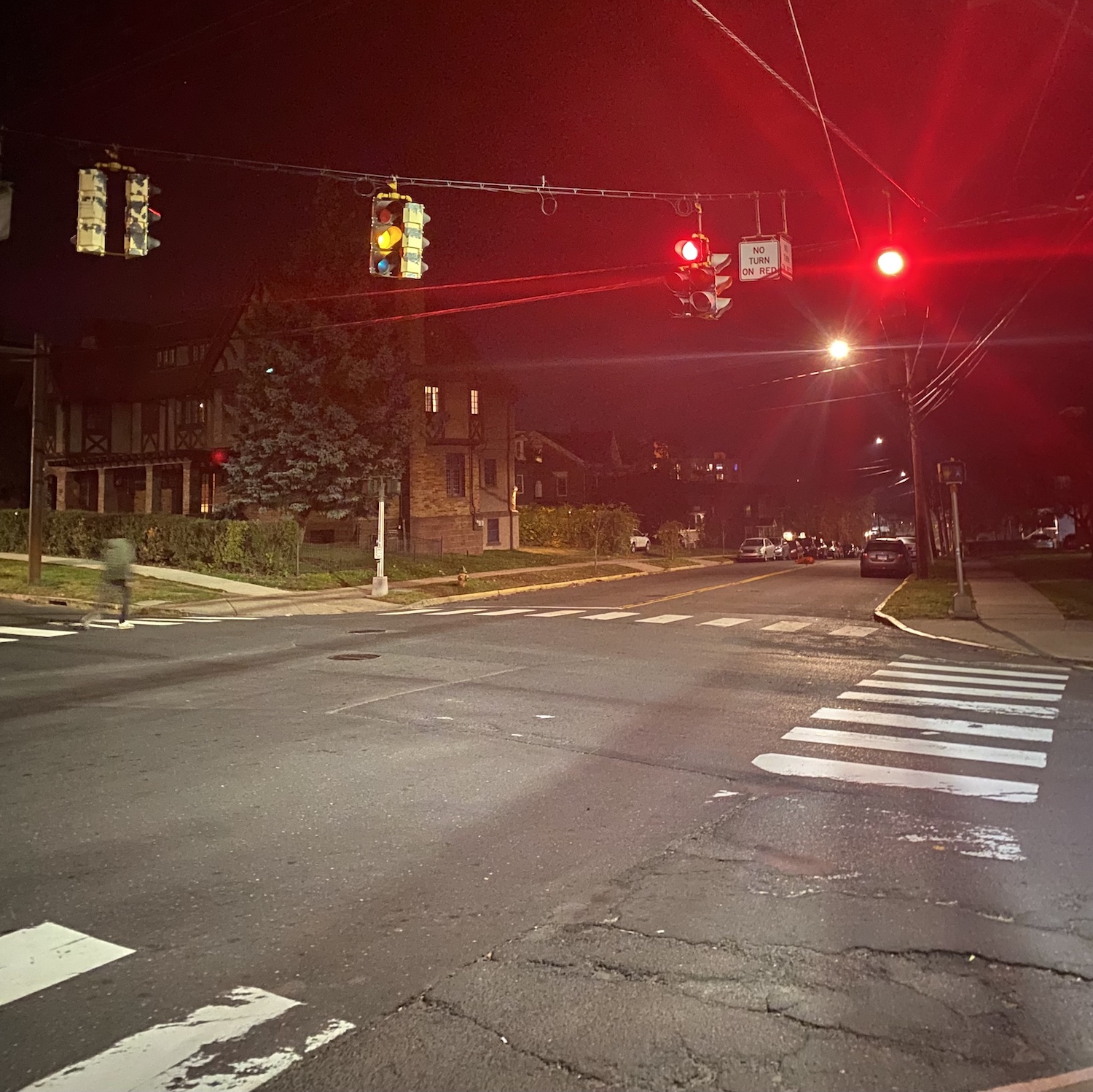
After midnight, the traffic lights along High Street are excused from telling you how to take turns. They abandon the cycle that involves green and instead leave rudimentary instructions, pulsating with warning colors. The cars on High Street don’t have to stop; they get a flashing yellow signal, which means proceed with caution. And if you’re coming up Church Street or Court Street, you get a flashing red light, which means the same thing as a stop sign. The white WALK and orange DON’T WALK boxes both stay dark, abandoning the pretense that pedestrians were ever going to wait for a special turn. The only requirement is that you be aware of other travelers, and no one, driving or walking, has the right to proceed without caution.
During the day, you might suspect that the lights give more green time to High Street than to its crossroads, but to prove it, you would need to watch for a long time. The night settings, on the other hand, flagrantly favor High Street and blaze its rank in yellow at second-story level. When the city is asleep like this, the lights will show you which streets are minor and which ones are the arteries.
It’s good to be in a city that goes to sleep, because then there’s a time of day when it means something to be awake. Never mind that you’re going to pay for it by missing daylight hours in the morning, or that being awake in the dark is not really extraordinary for human life. When you’re paying more attention than the metal arms above your head, you know your consciousness is exceptional. They’re breathing yellow, red, yellow, red, and they appear to trust you to get home safe.
Anne Kiely can be reached at afkiely@wesleyan.edu.



Leave a Reply